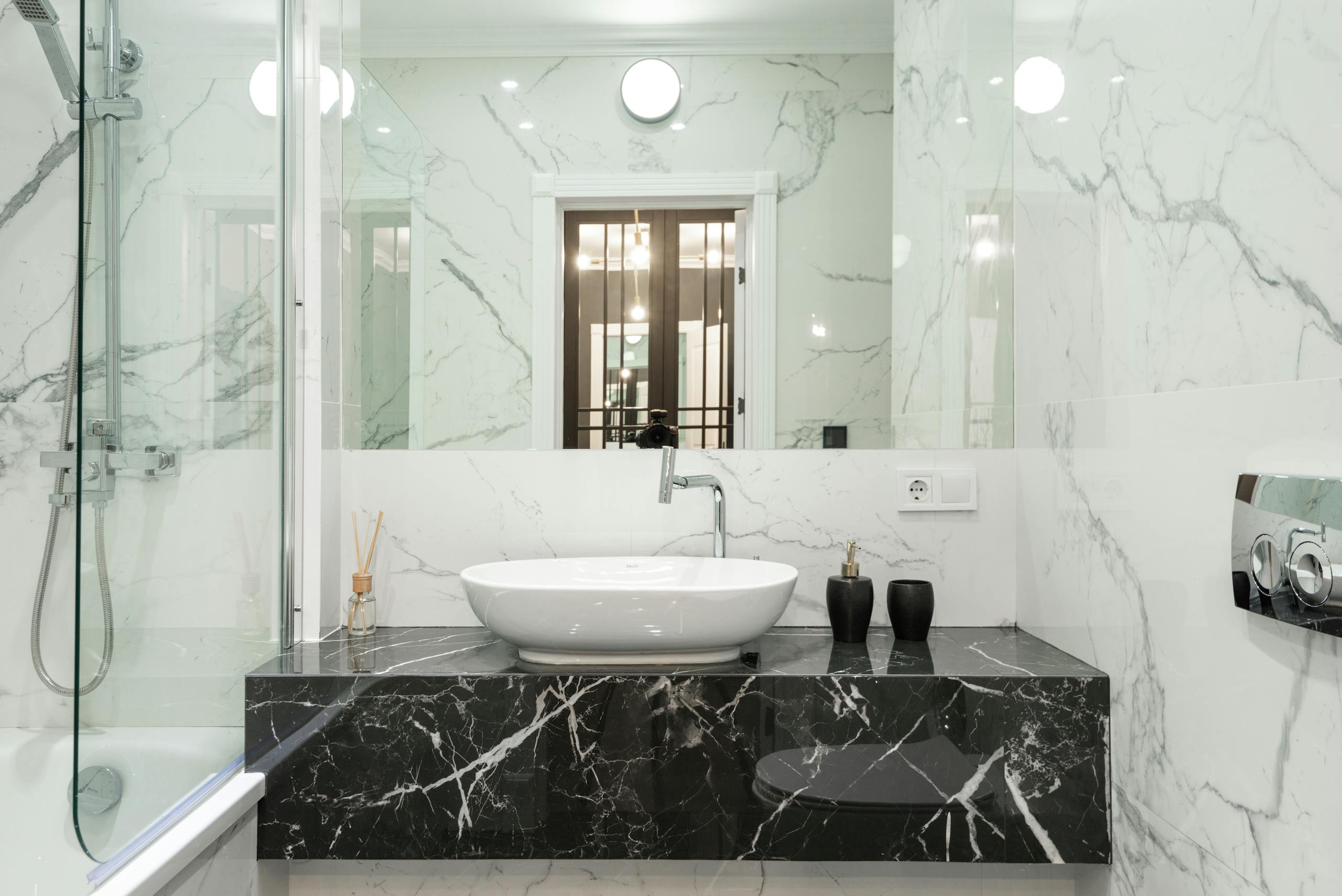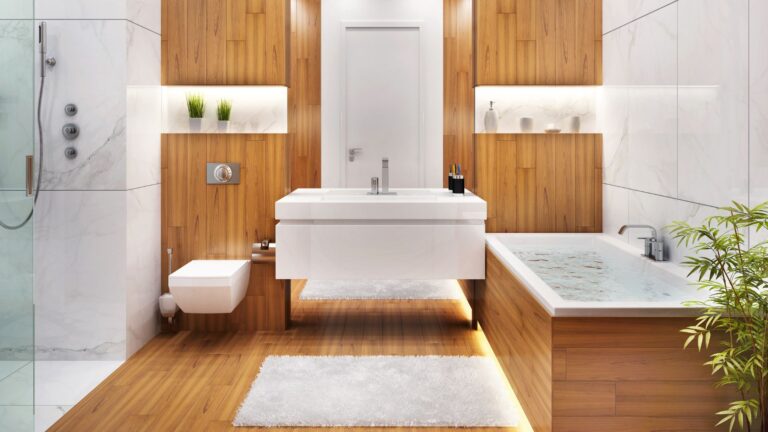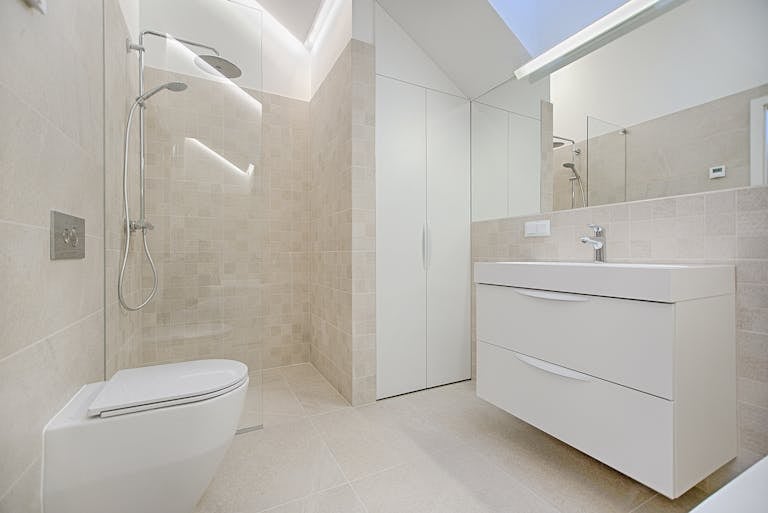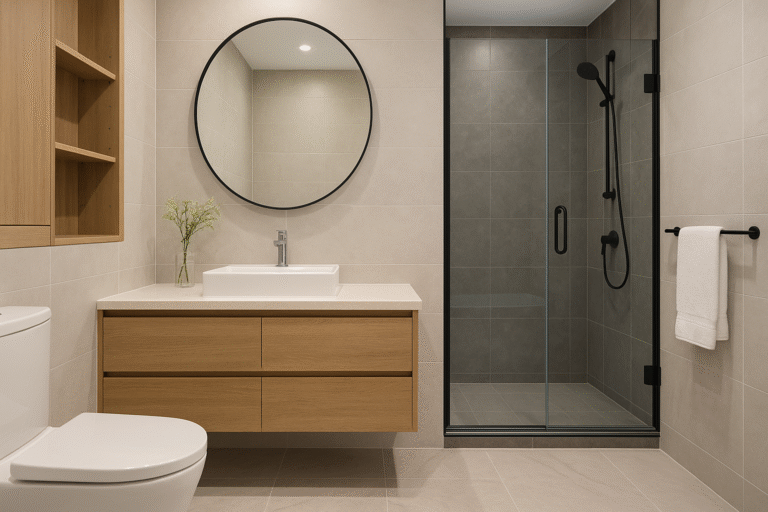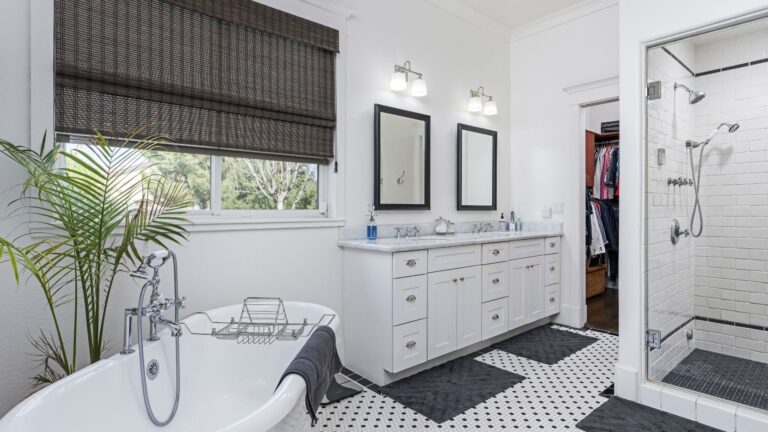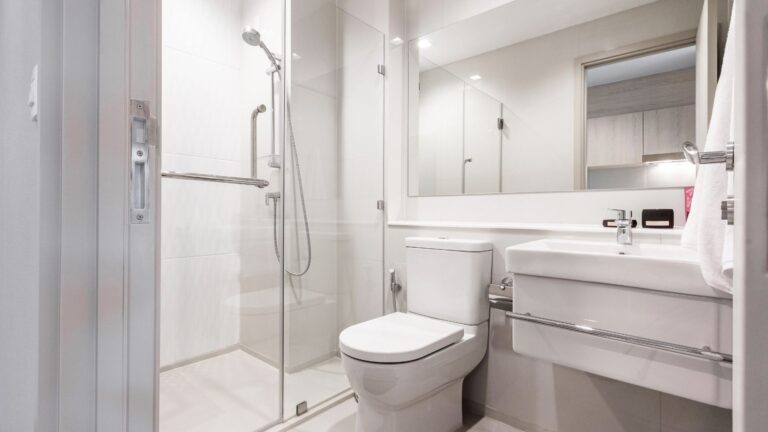Common Lighting Mistakes & Fixes: How to Correct Your Lighting Design
Lighting is one of the most important yet often overlooked aspects of home design. Good lighting not only enhances the aesthetic appeal of a room but also plays a key role in setting the atmosphere, improving functionality, and ensuring comfort. However, many homeowners make common lighting mistakes that can negatively impact their space, leaving it feeling off-balance, overly bright, or uninviting.
In this guide, we’ll explore some of the most frequent lighting mistakes people make in their homes and provide expert tips on how to fix them. Whether you’re redesigning your living room, kitchen, or bathroom, fixing these simple lighting errors can transform the look and feel of any space.
The Importance of Good Lighting in Your Home
Lighting is more than just a way to brighten up a room. It sets the mood, affects the room’s functionality, and helps highlight design features in your space. Good lighting ensures that you can carry out everyday tasks comfortably while also adding warmth and character to your interiors.
Lighting as a Functional and Decorative Element
Lighting serves a dual purpose it provides both functionality and decoration. It allows you to perform tasks such as cooking, reading, or grooming, but it also contributes to the overall ambiance of a room. When designed thoughtfully, lighting can enhance the room’s design, making it more inviting and comfortable.
Proper lighting should strike a balance between providing sufficient illumination for activities while also creating a pleasant and relaxing atmosphere. A well-lit room is both functional and aesthetically pleasing.
The Role of Lighting in Setting the Atmosphere
Lighting has a significant influence on the mood of a room. For example, bright lighting can energize a space, making it perfect for kitchens or work areas, while softer lighting can create a relaxing and cozy atmosphere in spaces like living rooms or bedrooms. The right lighting can transform a room’s energy and make it feel more comfortable.
Mistake #1: Overlooking Layered Lighting
One of the most common mistakes in home lighting design is overlooking the concept of layered lighting. Layering light in a room means combining multiple types of lighting to create a balanced and functional lighting scheme.
What Is Layered Lighting?
Layered lighting involves three main types of lighting: ambient lighting, task lighting, and accent lighting. Each type serves a different purpose, and combining them in the right way allows you to create a well-lit, versatile, and aesthetically pleasing space.
- Ambient Lighting: This is your primary light source, providing overall illumination for the room. It’s usually the light that fills the entire space, such as ceiling lights or recessed lighting.
- Task Lighting: This type of lighting is used for specific tasks like reading, cooking, or grooming. Task lighting should be bright and focused, typically placed near work areas like desks, kitchen counters, or vanities.
- Accent Lighting: Accent lighting is used to highlight certain features or areas, such as artwork, architectural details, or plants. It adds drama and depth to the space, creating visual interest.
Why It’s Essential to Combine Ambient, Task, and Accent Lighting
A room that only has ambient lighting can feel flat and uninspiring, while too much task lighting can make it feel harsh or clinical. By combining different types of lighting, you create a more dynamic space that is both functional and beautiful.
For example, in a bathroom, you might use a ceiling light (ambient) to brighten the room, install a vanity light (task) over the mirror for grooming, and add wall sconces (accent) to highlight artwork or architectural features. This layering of light provides flexibility for different activities while enhancing the room’s aesthetic appeal.
Fix: How to Add Layers to Your Lighting Setup
To fix this common mistake, start by incorporating all three types of lighting into your space. Ensure that your lighting scheme addresses the functional needs of the room while also adding decorative flair. Here’s how:
- Install multiple light sources: Use overhead lights for general lighting, focused task lighting in key areas, and accent lights to highlight design elements.
- Use dimmers: Adding dimmer switches to your lights allows you to control the intensity of the light, adjusting the atmosphere as needed.
- Consider the scale of the room: Larger rooms may require additional light sources to ensure that the space feels evenly lit, while smaller rooms may only need a few carefully placed light fixtures.
Mistake #2: Poor Light Placement
Another common lighting mistake is poor light placement. The location of your light fixtures can significantly impact the functionality and ambiance of a room. Incorrectly placed lighting can lead to uneven illumination, unnecessary shadows, or bright spots that create glare.
Common Areas Where Light Placement Fails
- Overhead Lights in Every Room: Relying solely on ceiling lights can lead to uneven lighting, leaving some areas too bright while others remain too dim. This is especially problematic in task-oriented areas like kitchens, bathrooms, or reading corners where proper lighting is crucial.
- Too Close or Too Far from Task Areas: Placing task lights too far away from the work area can leave it poorly lit, while placing them too close can cause uncomfortable glare or shadowing.
- Inadequate Lighting for Key Areas: Areas like countertops, vanities, or reading nooks often lack sufficient lighting if the light fixtures are not strategically placed. For example, under-cabinet lighting or vanity lights should be positioned directly above or beside work areas to eliminate shadows.
How Bad Placement Affects Lighting Effectiveness
Incorrect light placement not only affects the room’s aesthetics but can also make it difficult to perform tasks. Poorly placed lighting can create shadows, which can be a safety hazard in bathrooms or kitchens, especially around mirrors, sinks, or stoves. It also can lead to unnecessary eye strain, especially when working under bright, direct light sources.
Fix: Best Practices for Light Placement in Different Rooms
To fix poor light placement, consider the specific lighting needs of each room:
- Bathrooms: Place vanity lights around or above mirrors to eliminate shadows when grooming. For overall bathroom lighting, use ceiling-mounted fixtures or recessed lights, but consider adding task lighting around the sink for added brightness.
- Kitchens: Install under-cabinet lighting for countertops and work areas, and add pendant lights above islands or breakfast bars. Ceiling lights should provide general illumination, while task lights focus on food prep areas.
- Living Rooms and Bedrooms: Use a combination of floor lamps, table lamps, and overhead lighting to ensure well-balanced light distribution. Add task lighting near reading areas or desks and accent lighting to highlight artwork or architectural features.
Mistake #3: Choosing the Wrong Bulb Type or Wattage
Choosing the wrong bulb type or wattage can lead to poor lighting performance and unnecessary energy consumption. Using bulbs that are too dim for the space can make a room feel dark and uncomfortable, while using bulbs that are too bright can cause glare or discomfort.
How Selecting the Wrong Bulbs Affects Lighting Quality
- Dim Lighting: If your bulbs are too low in wattage or don’t emit enough light, the room will feel dark, which can affect visibility and comfort. For example, a bathroom with only 40-watt bulbs might not provide sufficient light for tasks like shaving or makeup application.
- Overly Bright Lighting: On the other hand, using bulbs with too high wattage can cause glare and eye strain, especially in spaces where people need to focus, like kitchens or bathrooms. It can also create an uncomfortable, harsh environment, particularly if the room has a lot of reflective surfaces.
- Energy Inefficiency: Using incandescent or halogen bulbs that consume more power and emit excessive heat leads to higher energy bills and increased cooling costs in warmer months.
Fix: How to Choose the Right Bulbs for Your Space
- Match Wattage to Room Size: When selecting bulbs, ensure that they provide enough light for the size of the room. For general lighting in a medium-sized room (150-200 square feet), aim for about 1,500 to 2,000 lumens, which equals roughly 13 to 18 watts in LED bulbs.
- Consider Color Temperature: The color temperature (measured in Kelvin) affects the feel of the room. For example:
- Warm White (2700K-3000K) is ideal for creating a cozy, relaxing atmosphere in living rooms or bedrooms.
- Cool White (4000K-4500K) works well for bathrooms and kitchens, as it provides bright, crisp light for tasks.
- Daylight (5000K-6500K) is great for spaces where you need clear, bright light, such as work areas or bathrooms for grooming.
- Warm White (2700K-3000K) is ideal for creating a cozy, relaxing atmosphere in living rooms or bedrooms.
- Use Energy-Efficient Bulbs: Switch to LED bulbs to save energy and reduce your carbon footprint. LED bulbs provide excellent brightness, are energy-efficient, and last much longer than traditional incandescent bulbs.
Mistake #4: Overusing Ceiling Lights
Relying too much on ceiling lights is another common mistake in lighting design. While ceiling lights are essential for overall illumination, using them as the sole light source can create a flat, uninviting atmosphere in a room.
Why Relying Solely on Overhead Lighting Doesn’t Work
Overhead lighting often creates shadows and harsh contrasts, particularly when used alone. It tends to make a room feel less inviting, as it doesn’t provide the soft, ambient lighting needed for comfort. Additionally, ceiling lights can cause glare if they’re too bright, which can be uncomfortable, especially in spaces like living rooms or bedrooms where relaxation is key.
The Impact of Harsh Shadows and Glare from Ceiling Lights
Ceiling lights often cast shadows that make certain areas feel dark or uneven. This is particularly noticeable in bathrooms where tasks like shaving, grooming, or applying makeup require even, shadow-free lighting. Overhead lights can also cause glare in living areas, making them uncomfortable for reading or watching TV.
Fix: How to Incorporate Other Light Sources for Balance
To fix the issue of relying on ceiling lights alone, incorporate a variety of light sources in the room:
- Task Lighting: Add focused lighting where it’s needed, such as vanity lights in bathrooms or pendant lights over kitchen islands. Task lights provide brighter, more directed light for specific activities.
- Accent Lighting: Use accent lighting, such as wall sconces or table lamps, to add warmth and visual interest to the room. Accent lighting can create a layered lighting effect that balances out the overhead lights and eliminates harsh shadows.
- Use Dimmers: Installing dimmer switches allows you to control the intensity of the ceiling light, providing more flexibility for different activities and moods.
Mistake #5: Ignoring the Purpose of the Room
Each room in your home has a specific purpose, and the lighting should reflect that purpose. One of the most common lighting mistakes is failing to tailor your lighting design to the needs of the room, resulting in inefficient or uncomfortable lighting.
Lighting Needs Vary by Room Function
Lighting needs differ from room to room, depending on how the space is used. For example, the lighting in your kitchen should be bright and focused for food preparation, while the lighting in your bedroom should create a calm and relaxing atmosphere for sleep.
- Kitchens require bright, task-oriented lighting for cooking, chopping, and cleaning. Overhead ceiling lights are not enough, and additional task lighting (like under-cabinet lighting or pendant lights) is necessary to illuminate work surfaces.
- Bathrooms require task lighting around mirrors for grooming, as well as ambient lighting for general illumination. The combination of these lighting types helps improve functionality while creating a pleasant atmosphere.
- Living Rooms should have a mix of ambient, task, and accent lighting to cater to various activities such as reading, watching TV, or socializing. Too much task lighting can make the room feel sterile, while too little lighting can make it feel too dark or uncomfortable.
Fix: Customizing Lighting to Suit the Room’s Purpose
To fix this mistake, consider how each room will be used and adjust the lighting accordingly:
- Task Lighting for Work Areas: In kitchens, home offices, and bathrooms, add focused lighting such as under-cabinet lights, desk lamps, or vanity lights that provide direct, bright light for tasks.
- Ambient Lighting for Relaxation Spaces: In living rooms, bedrooms, and dining rooms, layer lighting with soft, ambient sources like floor lamps, sconces, and chandeliers to create a relaxing atmosphere.
- Accent Lighting for Aesthetic Appeal: Use accent lighting to highlight design features such as artwork, bookshelves, or architectural details. This is particularly useful in living rooms and dining rooms to enhance the room’s visual appeal.
Mistake #6: Failing to Consider Natural Light
Natural light plays a significant role in any room’s lighting design. Relying solely on artificial lighting can lead to higher energy bills and an environment that feels disconnected from the outdoors. Properly integrating natural light can enhance the quality of your space while reducing energy consumption.
How Natural Light Impacts Your Lighting Plan
Natural light provides a warm, inviting glow that artificial lights often can’t replicate. When planning your lighting, you should consider how much natural light enters the room and at what times of the day. This will allow you to complement natural light with artificial lighting when necessary.
For example, in a south-facing room, you might only need minimal lighting during the day since the natural light will be sufficient. However, in a north-facing room, you may need more artificial lighting to make up for the lack of sunlight.
The Effects of Lighting on Mood and Energy Efficiency
Exposure to natural light has been shown to improve mood, productivity, and well-being. It helps regulate your circadian rhythm and promotes better sleep. By designing your lighting plan to enhance natural light, you can create a healthier, more comfortable living environment.
However, in spaces with limited natural light, it’s essential to make up for that deficit with bright, high-quality artificial lighting.
Fix: How to Optimize Natural Light and Complement It with Artificial Lighting
To make the most of natural light:
- Use Light-Reflecting Surfaces: Opt for light-colored walls, mirrors, and furniture to reflect sunlight into the room. This will help maximize the natural light you receive, especially in rooms with limited windows.
- Strategic Light Placement: Position artificial lights near windows to ensure that they complement natural light rather than competing with it. Use adjustable lighting (like dimmable lights) to adjust the balance between natural and artificial light based on the time of day.
- Layer Your Lighting: Even in spaces with plenty of natural light, you may still need task and accent lighting in the evening or on cloudy days. Layer ambient, task, and accent lights to balance natural and artificial light effectively.
Mistake #7: Not Using Dimmers or Smart Lighting
Many homeowners overlook the benefits of dimmers and smart lighting, which can significantly improve the flexibility and functionality of your lighting setup. Without these tools, your lighting can become too rigid or inefficient, especially when the needs of the room change.
The Importance of Flexibility in Lighting
Dimmers allow you to adjust the brightness of your lights to suit different activities. For instance, you may want bright, focused light while cooking but softer, ambient light while relaxing or watching a movie. Without dimmers, you’re stuck with one setting for your lights, which can make a space feel either too bright or too dark for certain activities.
Smart lighting adds even more control, allowing you to set schedules, adjust brightness remotely, and even control the color temperature of your lights with a simple voice command or app.
Fix: How to Add Dimmers or Smart Lighting Controls
- Install Dimmer Switches: For flexibility, install dimmer switches in areas where you want to adjust the lighting based on your needs. This works especially well in living rooms, bedrooms, and dining areas.
- Use Smart Bulbs and Apps: Smart bulbs can be controlled from your smartphone or through voice assistants like Alexa or Google Assistant. You can set schedules to have your lights turn on or off at specific times, adjust brightness, and even change the color of the light to match your mood or activity.
- Create Lighting Scenes: Many smart lighting systems allow you to create “scenes” that adjust the lighting to a specific setting like a “relax” mode for soft lighting or a “work” mode for bright task lighting. These scenes help customize your lighting to suit various activities.
Mistake #8: Neglecting Lighting Maintenance
Regular maintenance is crucial to ensuring that your lighting system continues to perform efficiently. Dust, dirt, and grime can reduce the effectiveness of your lights, causing them to lose brightness and become inefficient. Neglecting to maintain your lights can also lead to early bulb burnout or wiring issues.
How Dust and Dirt Can Affect Lighting Quality
Over time, dust and dirt can accumulate on light fixtures and bulbs, reducing their ability to shine brightly and efficiently. This can result in dimmer lighting and a reduction in overall energy efficiency.
Fix: Simple Maintenance Tips to Improve Lighting Performance
- Clean Light Fixtures Regularly: Dust and wipe down your light fixtures every few weeks to ensure they are operating at full brightness. Use a soft cloth to avoid damaging the surface.
- Replace Burnt-Out Bulbs Promptly: Don’t wait until multiple bulbs burn out. Replace them as soon as you notice that they are no longer working to maintain the quality of your lighting.
- Check for Wiring Issues: If you notice flickering or malfunctioning lights, check the wiring or contact a professional electrician to ensure everything is functioning properly.
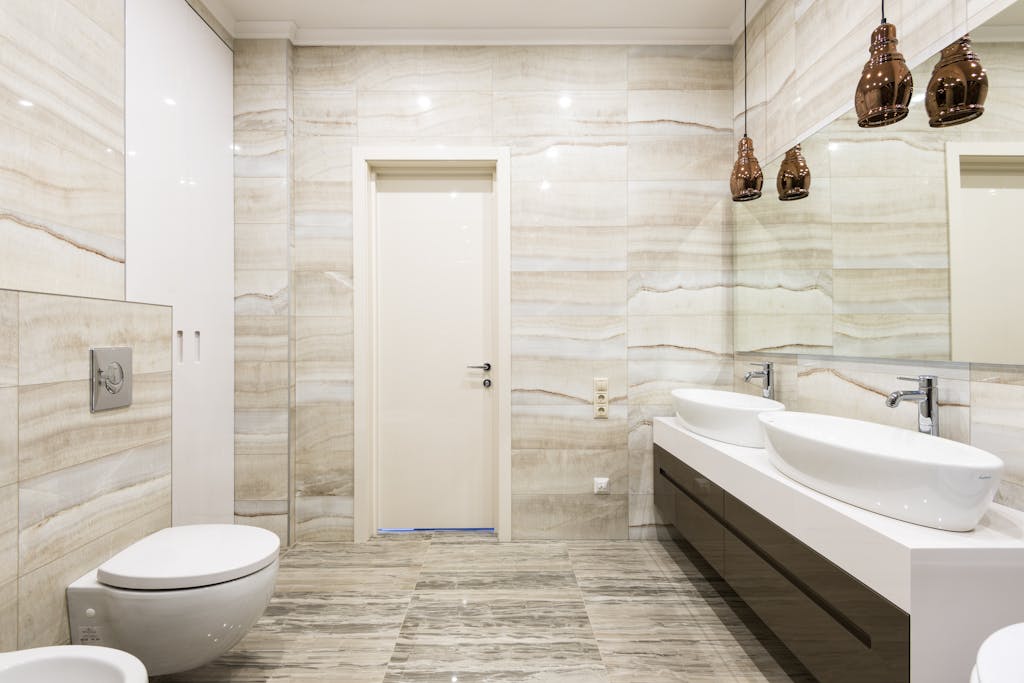
Conclusion: Common Lighting Mistakes & Fixes
Lighting mistakes are easy to make but simple to fix once you understand the key principles of good lighting design. By addressing common mistakes such as poor placement, inadequate brightness, and failing to consider the purpose of each room, you can enhance the comfort and functionality of your home. The right lighting can transform any space, making it more inviting, energy-efficient, and practical.
Contact Us for a Free Consultation
If you’re unsure about how to fix lighting mistakes in your home or need expert advice on lighting design, we’re here to help. Contact us today for a free consultation, and let’s ensure your home lighting is both beautiful and functional.

